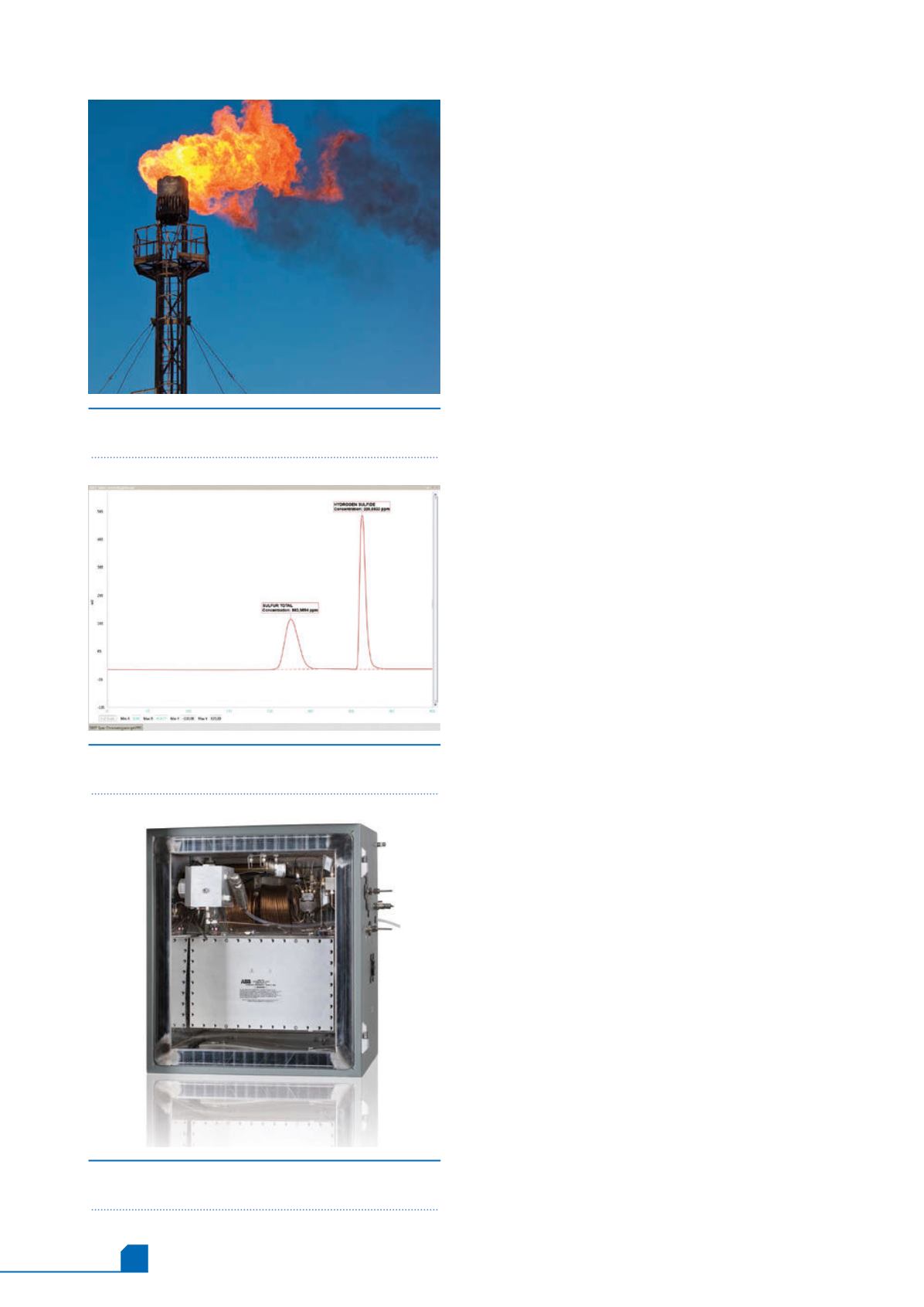
June
2016
HYDROCARBON
ENGINEERING
24
hydrocarbon processing industry, paying close attention to
design for operational safety, measurement accuracy and
reliability to meet regulatory requirements, and to sustain low
total cost of ownership.
Meeting pollution requirements
The EPA has issued the final amendments to the new source
performance standards (NSPS) for process heaters and flares
at petroleum refineries.
n
n
40CFR60 Subpart Ja: total sulfur measurements.
§
§
Determine sulfur dioxide (SO
2
) emissions from the
flare.
§
§
Measurement ranges of 1.1 - 1.3 times the maximum
anticipated sulfur concentration.
n
n
40CFR60 Subpart Ja: hydrogen sulfide (H
2
S)
measurements.
§
§
Determine the hydrogen sulfide (H
2
S) in the fuel gas
to the flare.
§
§
Short term limit of 162 ppmv as a feed to the flares.
§
§
Span value for this measurement is 300 ppmv H
2
S.
n
n
40CFR60.18: net heating value.
§
§
Maintain a minimum Btu content and measure net
heating value to the flare.
§
§
300 Btu/ft
3
or greater if the flare is steam-assisted or
air-assisted.
§
§
200 Btu/ft
3
or greater if the flare is non-assisted.
The PGC5000 series of analysers provides a versatile
platform to combine these three measurements in the
optimal oven and controller configurations to minimise
capital cost, and focus on maximum measurement
availability, ease of maintenance and regulation compliance.
Total sulfur measurements
A recent development from ABB provides the ability to
measure, independently, the hydrogen sulfide (H
2
S) and the
total sulfur within a single PGC5007 total sulfur analyser,
reducing the initial investment cost of the flare analytical
system and the total cost of ownership.
For total sulfur measurements (outlined in 40CFR60
Subpart Ja), ABB’s PGC5007B analyser employs a field proven
combination of hardware and application experience to
provide a simple and robust measurement result: sample
injection
→
oxidation
→
separation
→
measurement.
Application features and benefits include:
n
n
Simple design: one injection valve, one set of columns,
one detector, no complex backflush or heart-cut
techniques.
n
n
Guaranteed, interference-free measurement without
matrix or stream composition dependencies.
n
n
Sulfur specific detection.
n
n
Wide analytical measurement range from 0 - 100%, to
satisfy measurement ranges of 1.1 - 1.3 times the
maximum anticipated sulfur concentration.
Hydrogen sulfide measurements
The PGC5007B is based and built according to ASTM method
D7041-04(2010), Standard Test Method for Determination of
Total Sulfur in Light Hydrocarbons, Motor Fuels and Oils by
Online Gas Chromatography with Flame Photometric
Detection. With hundreds in service around the world, this
Figure 4.
Sulfur detection and limits are mandated by
worldwide local agencies.
Figure 6.
The PGC5007 interior oven with proven
valves, vapouriser, furnace, column and detector.
Figure 5.
Hydrogen sulfide (H
2
S) and total sulfur can
be independently measured within a single analyser.


